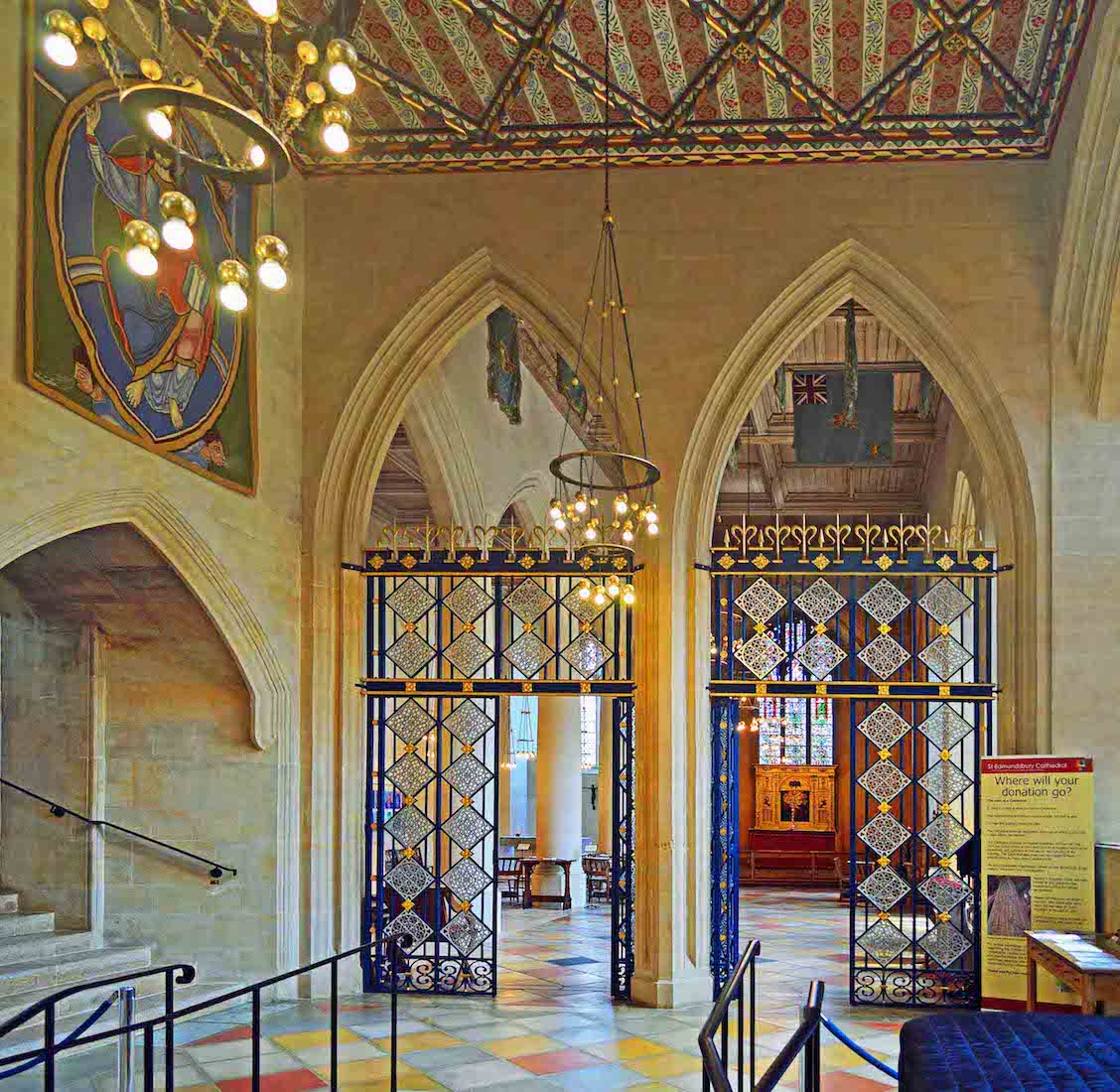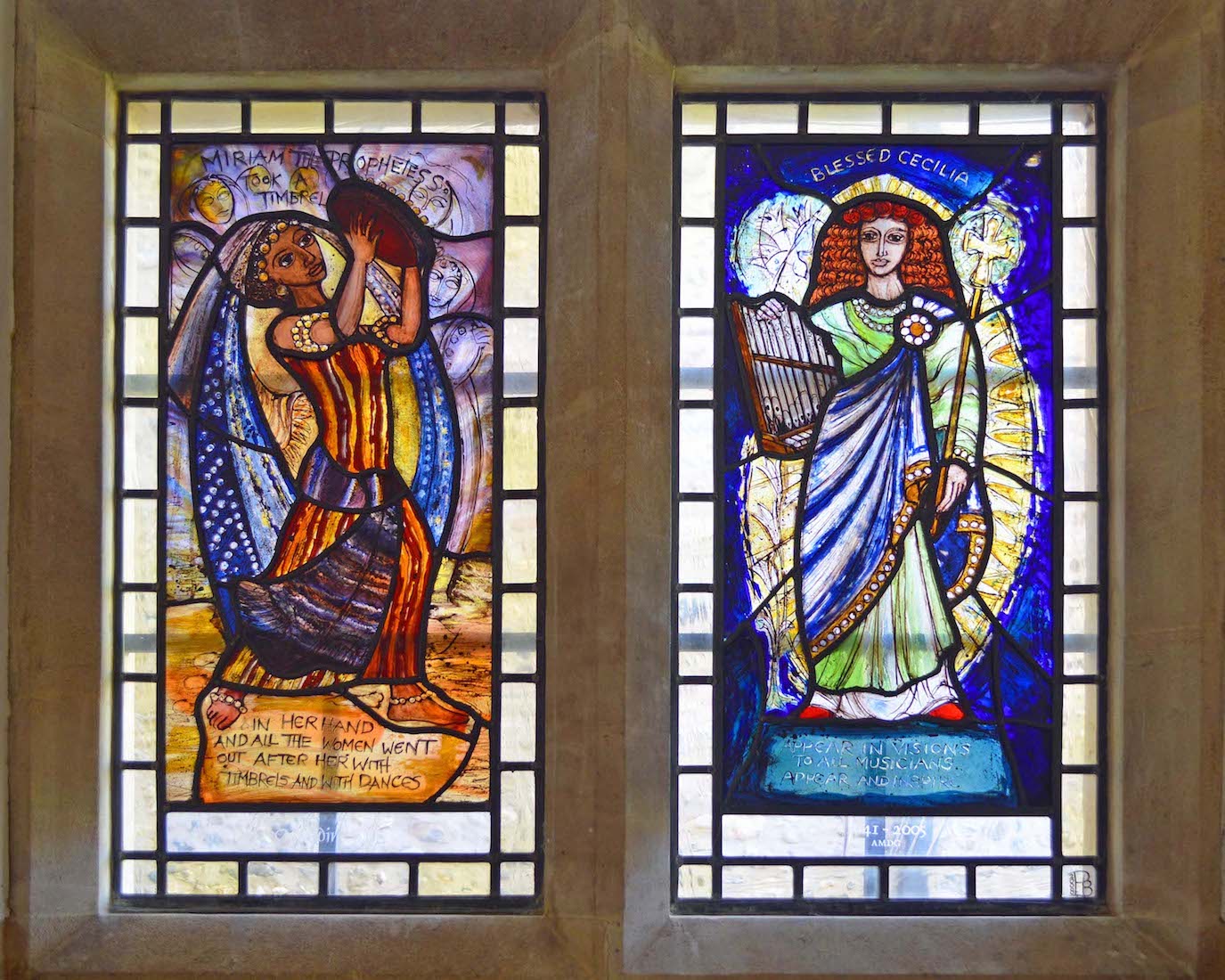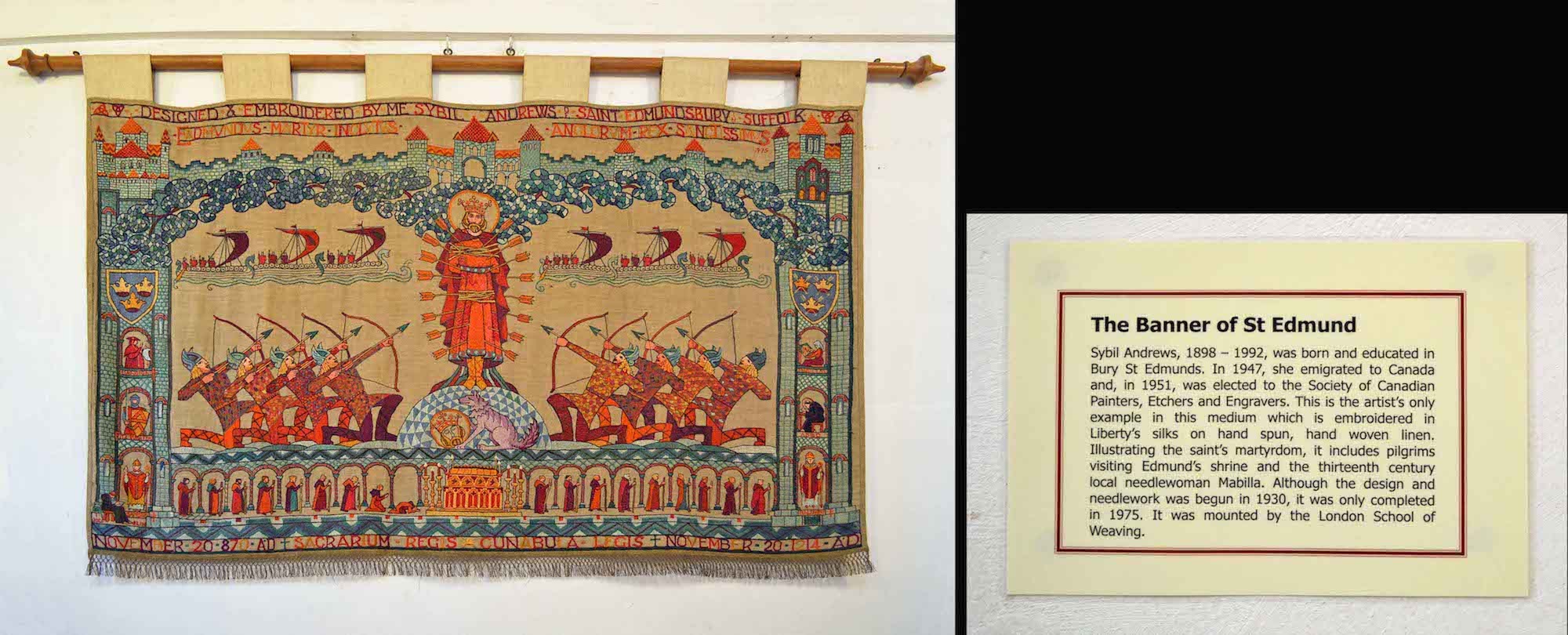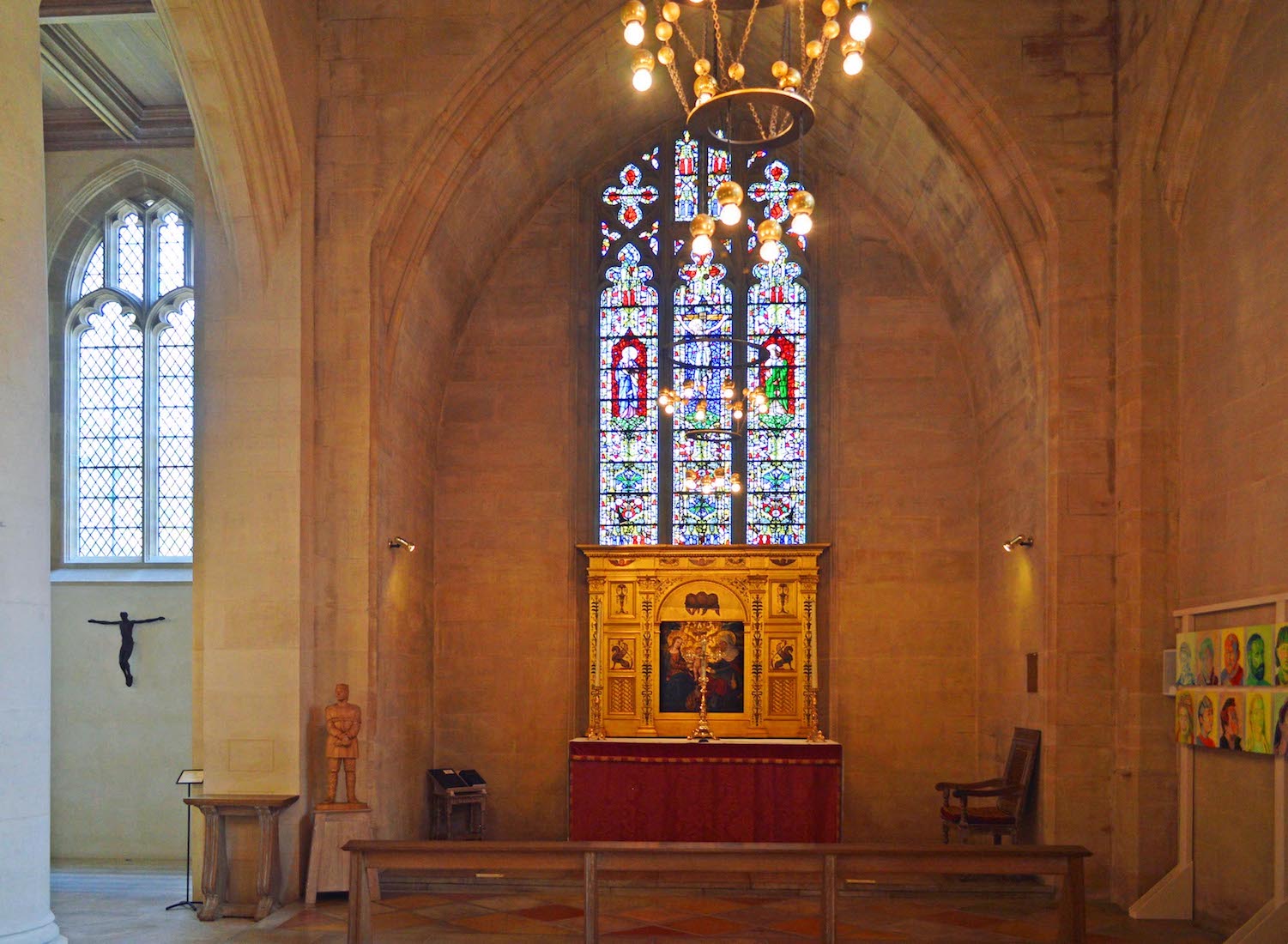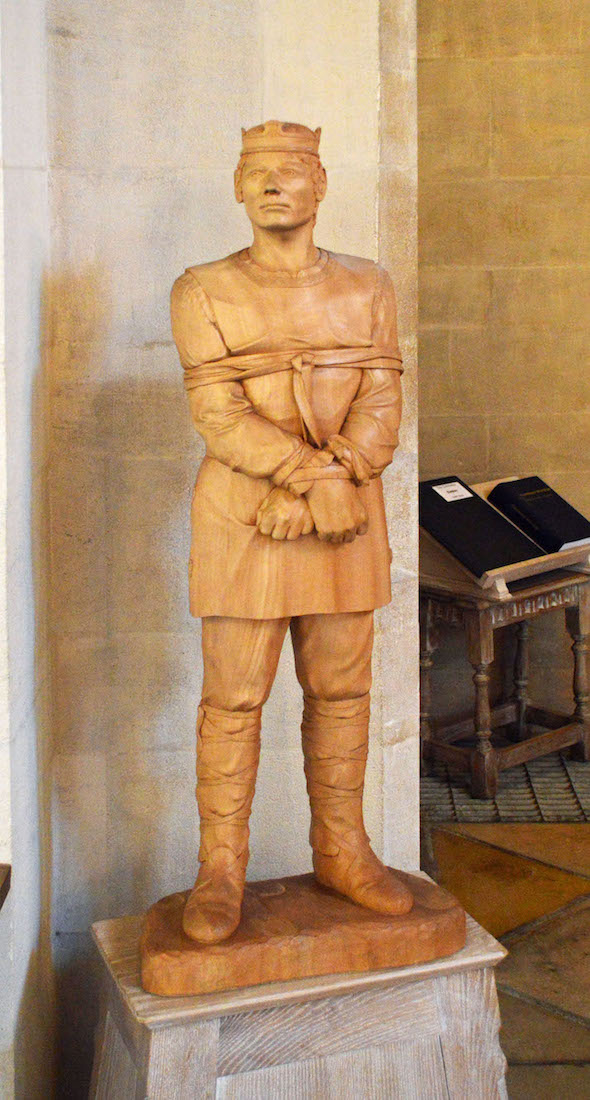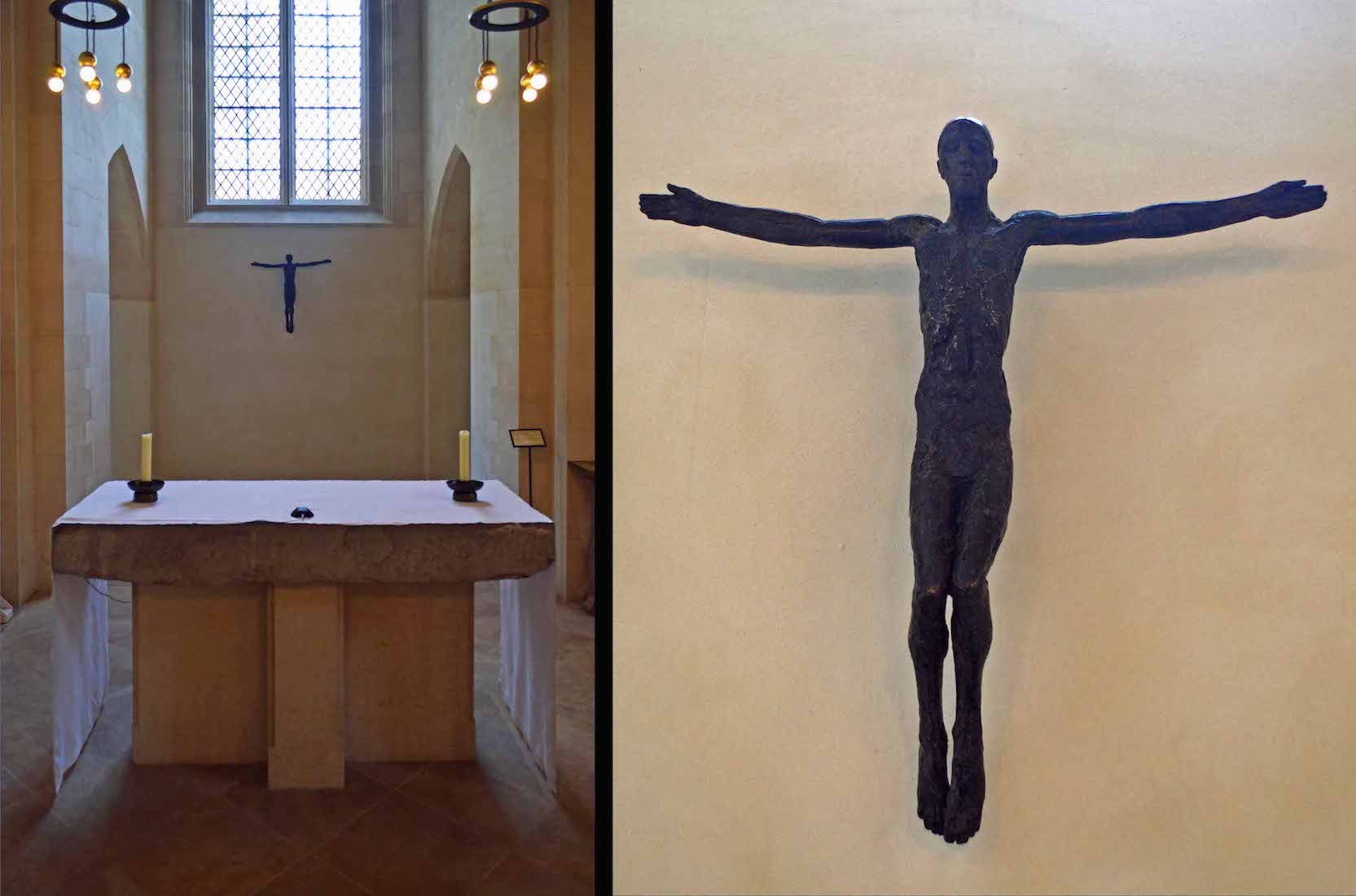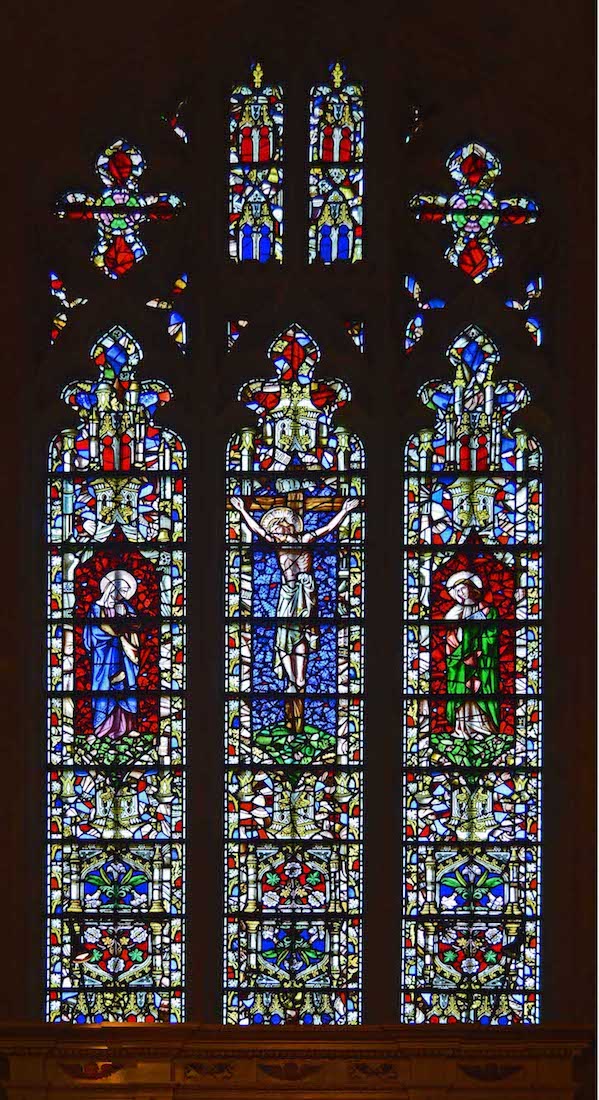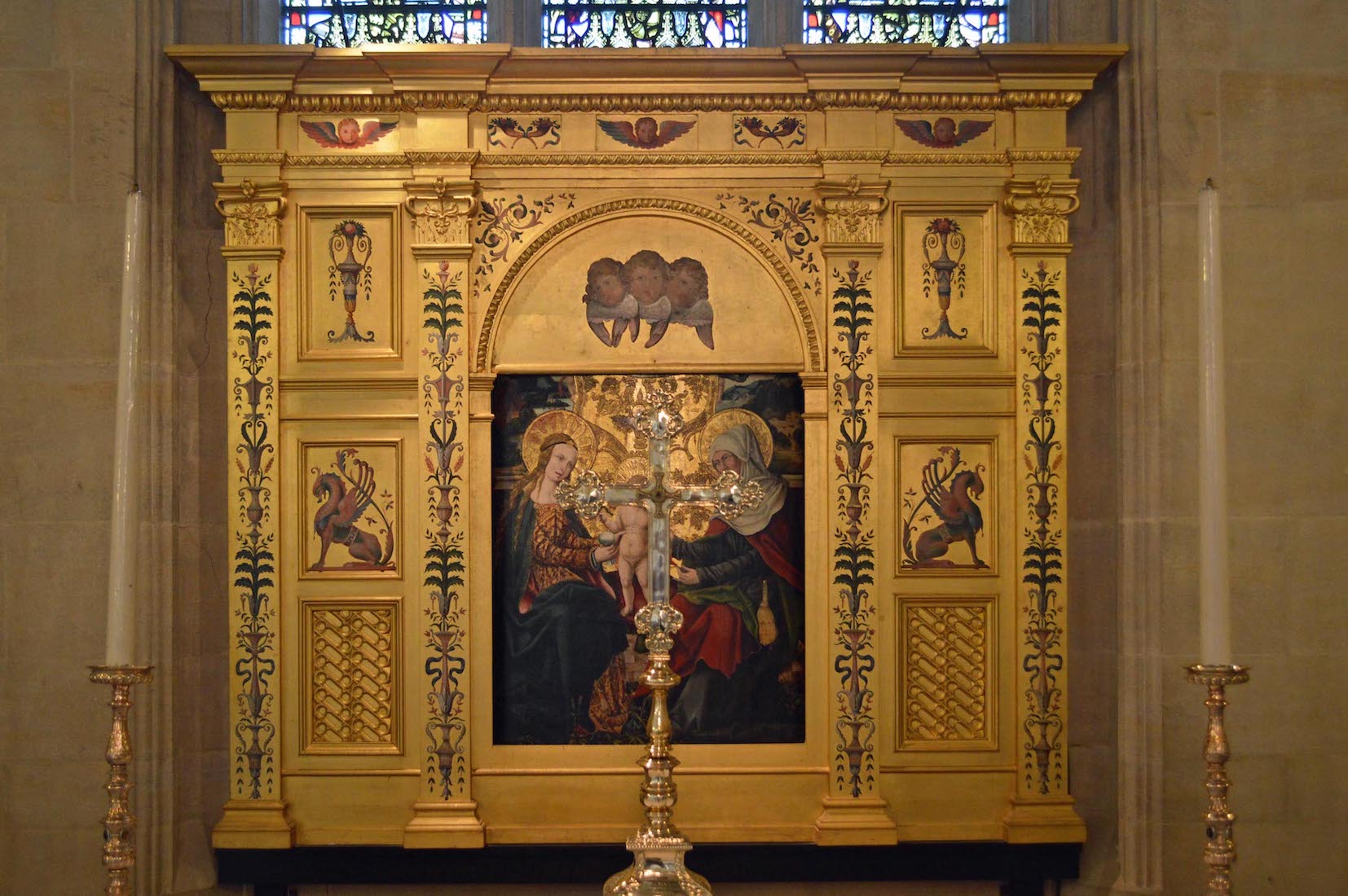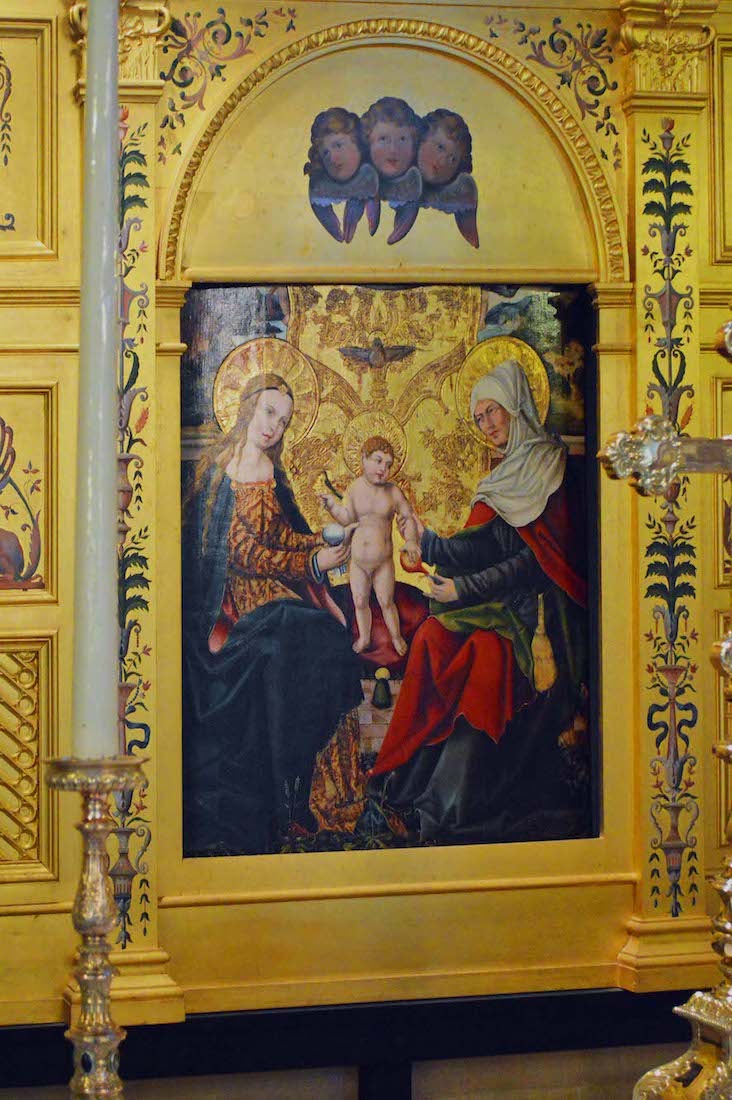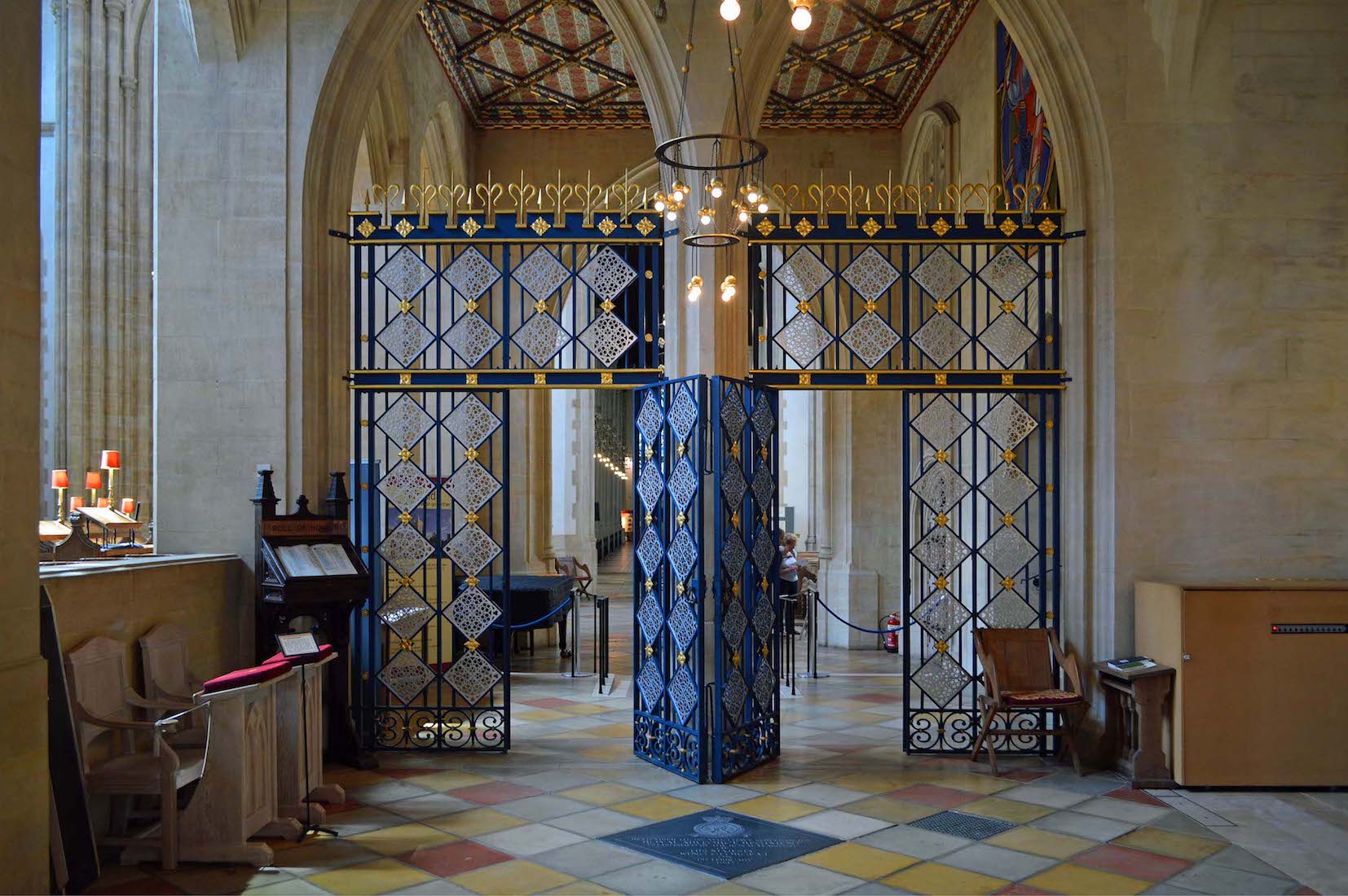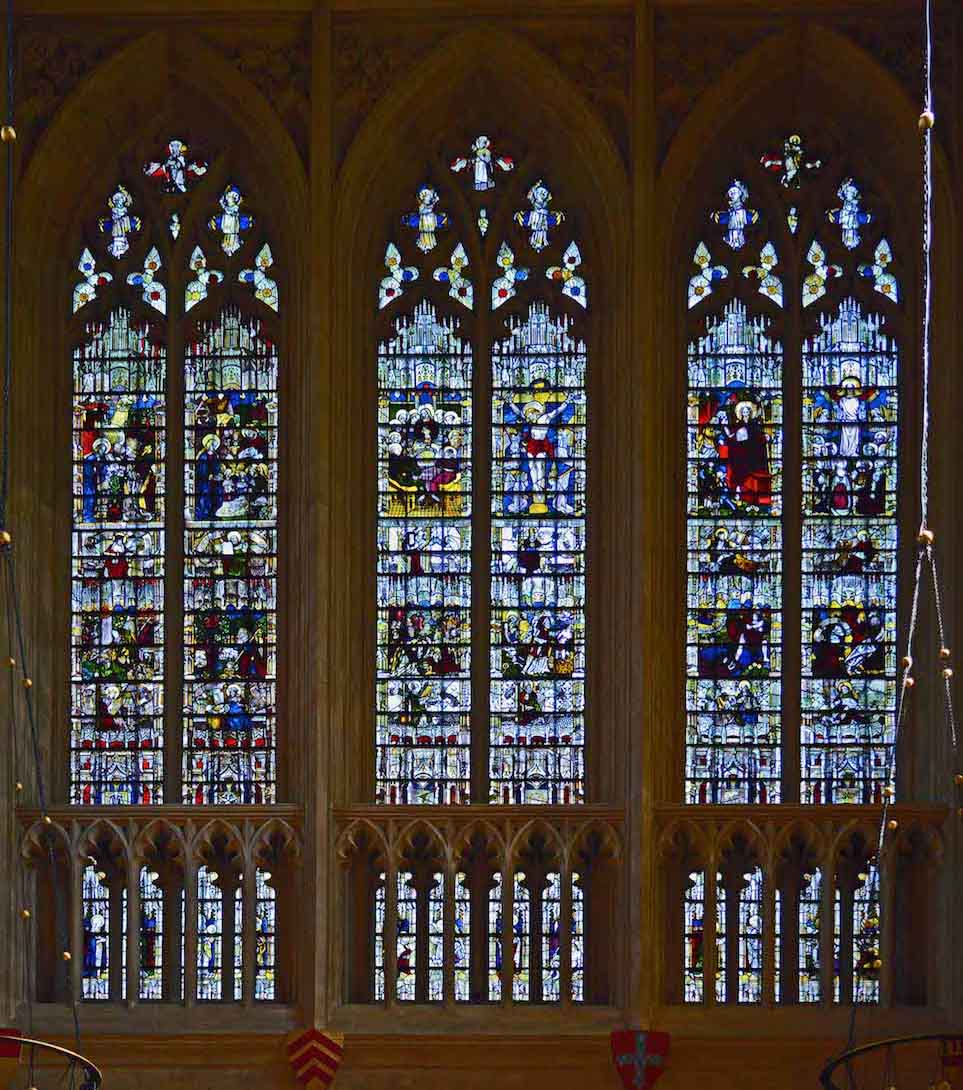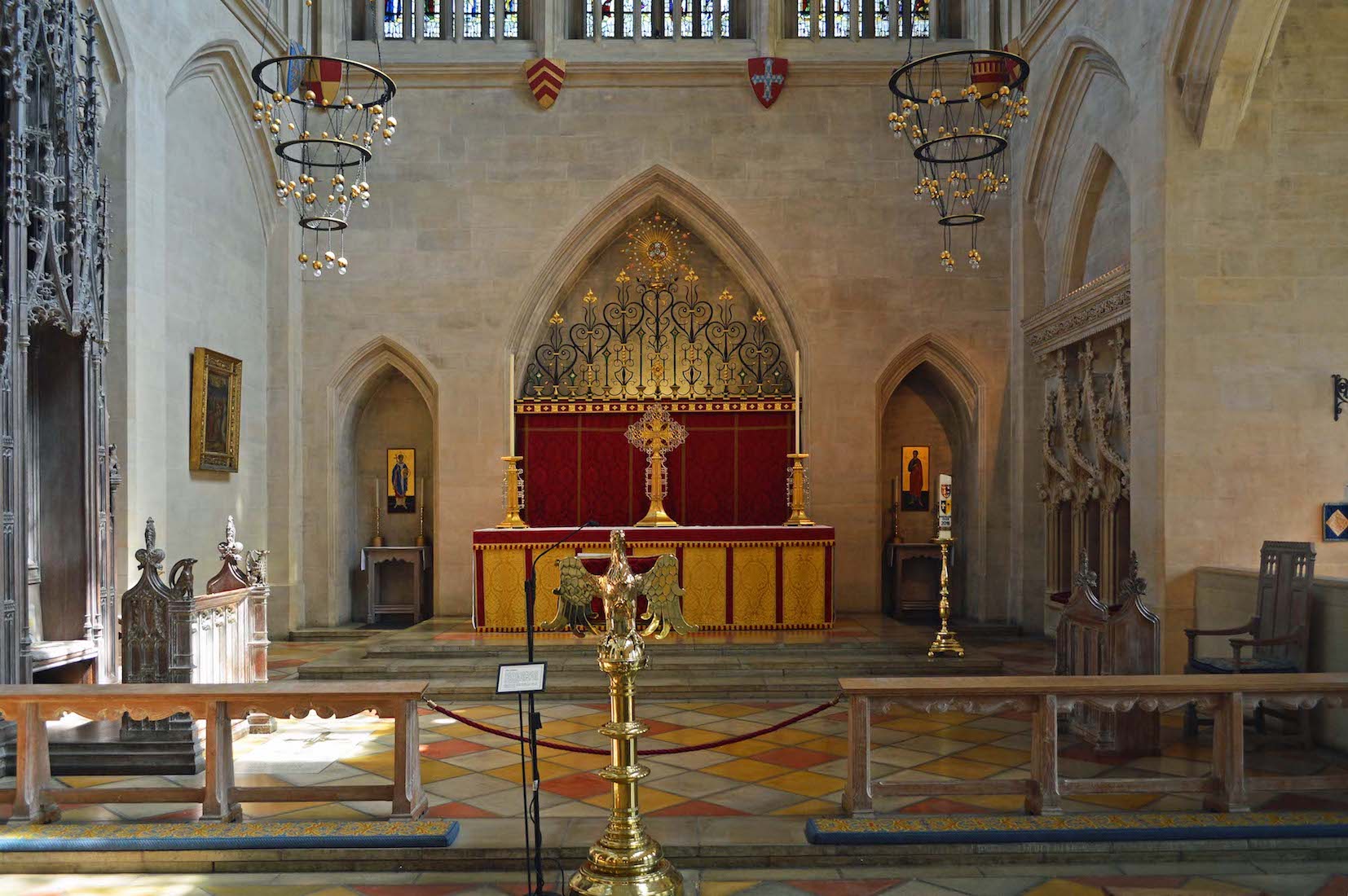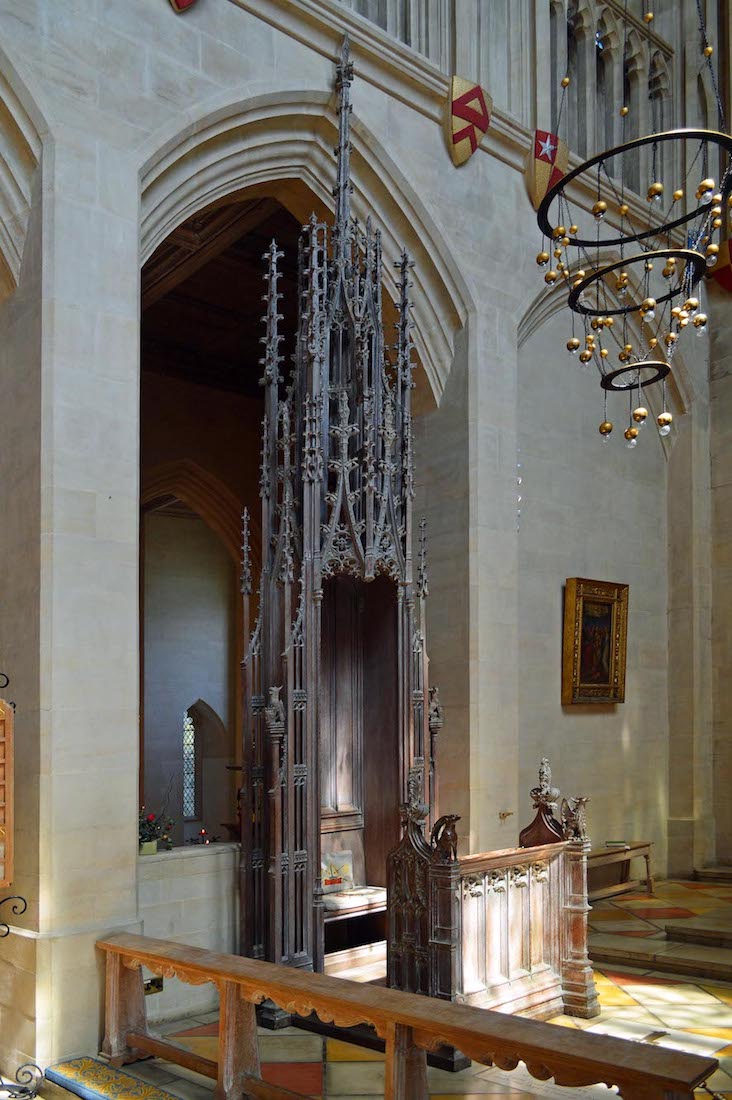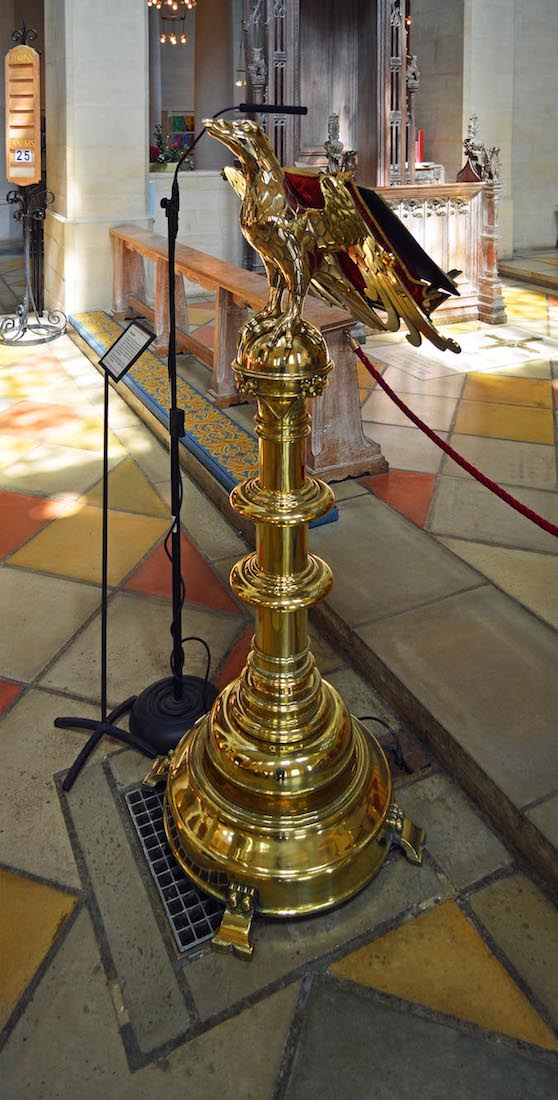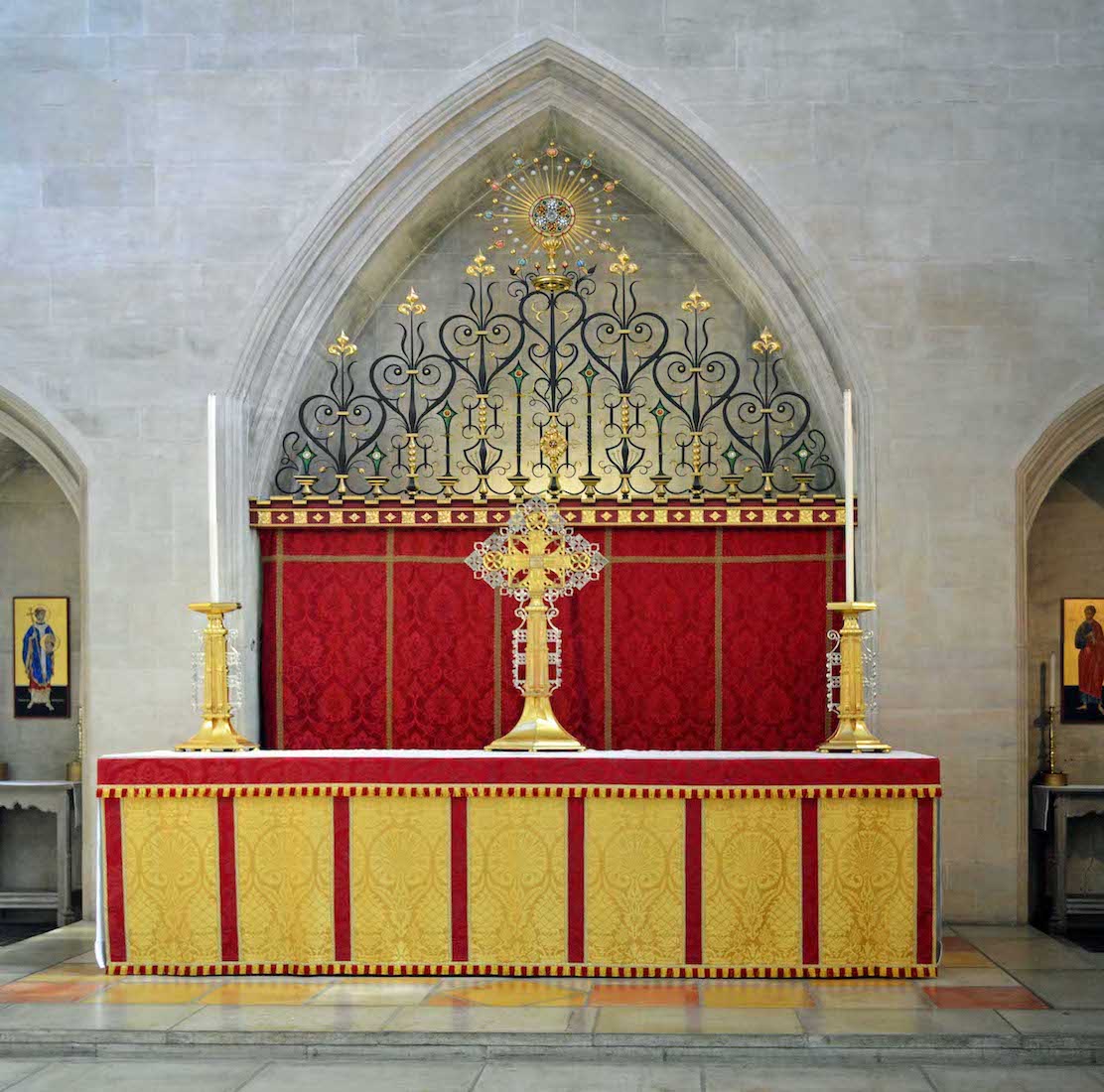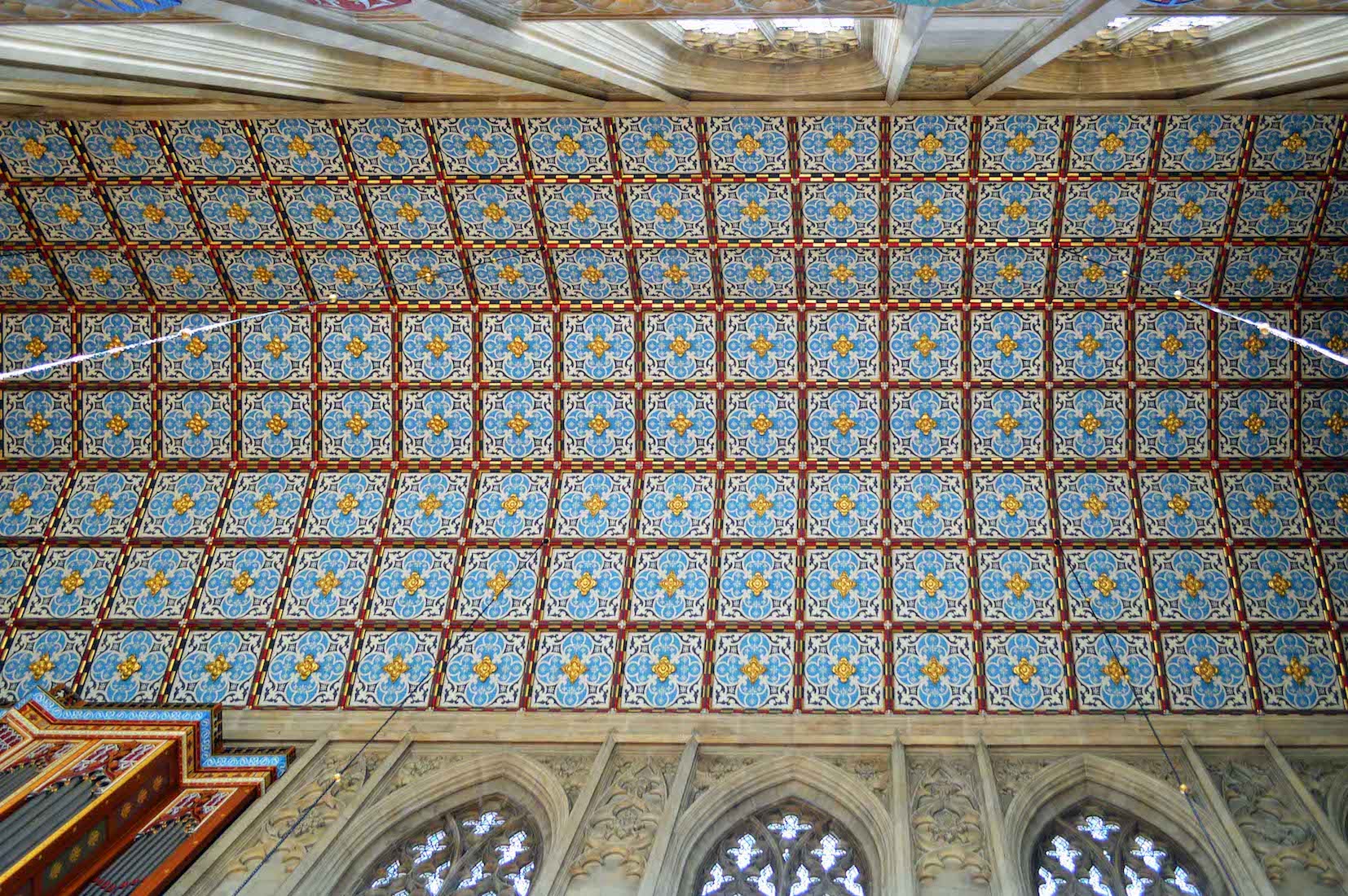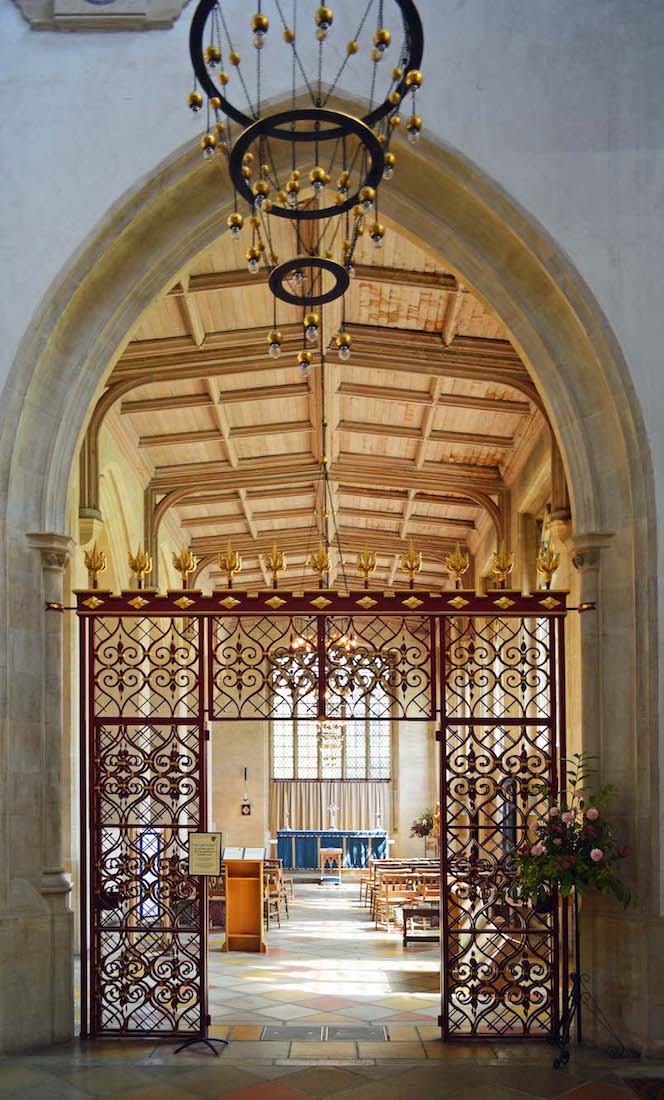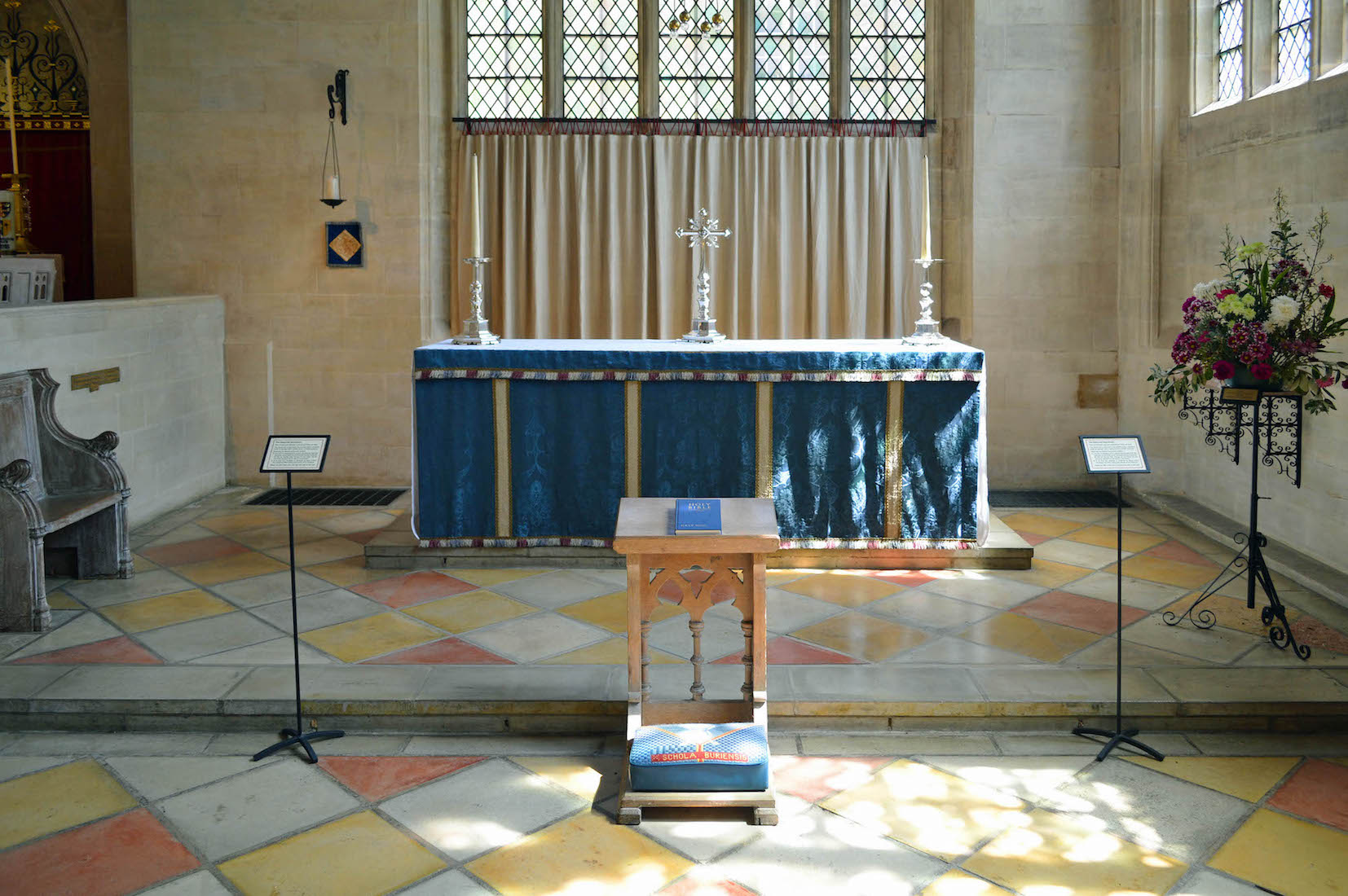42. CHOIR SCHOOL STAIRS
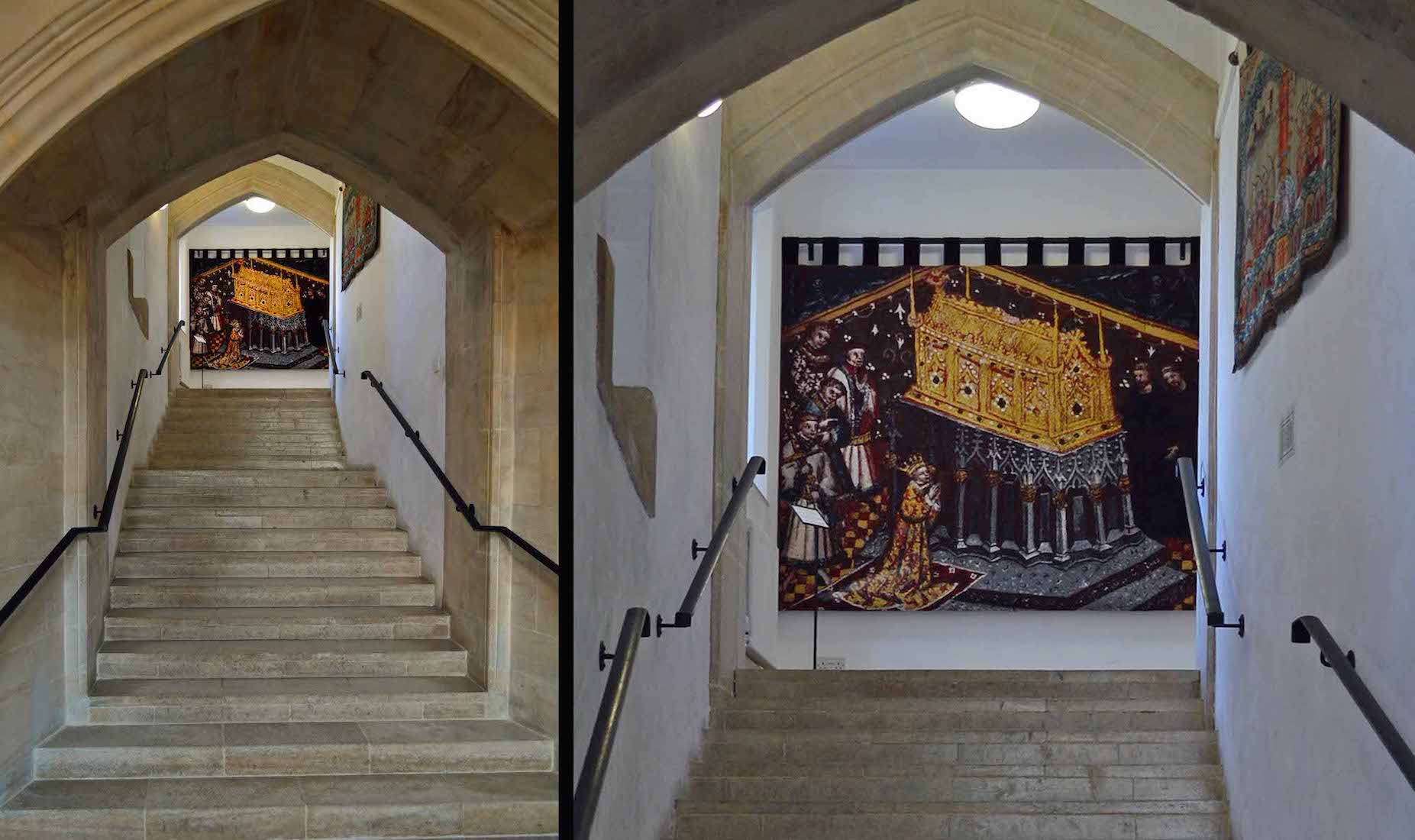
These stairs lead up to the Choir School, but there are items of interest along the way. Bury St Edmunds was once a great centre of manuscript production, and there are some tapestries in the Cathedral which are based on manuscripts made at the abbey. This image is based on an image from the fifteenth-century manuscript BL Harley 2278.
43. MUSIC WINDOWS
Also by the stairs is this pair of windows with a music theme. The Birt Memorial Windows are by Pippa Blackall. The window at left depicts Miriam the Prophetess. Miriam was the elder sister of Moses and Aaron. She was a prophet and first appears in the Book of Exodus. The window at right depicts St Cecilia the Patron Saint of Music. It is written that as the musicians played at her (forced) wedding she ‘sang in her heart to the Lord’.
44. ST EDMUND BANNER
Poor St Edmund came to a bad end as pictured on this banner. The banner was created by Sybil Andrews, 1898 – 1992, and is the artist’s only example in this medium. It illustrates the saint’s martyrdom and includes pilgrims visiting Edmund’s shrine, and the 13th century local needlewoman Mabilia (at right). It was completed in 1975.
45. THE NORTHERN CHAPELS
Coming back down the stairs and throught the steel gates, we approach the two chapels: St Edmund’s Chapel to the left, and the Transfiguration Chapel at right. The Transfiguration Chapel was consecrated by the Archbishop of Canterbury in 2009. At centre stands a statue of St Edmund.
46. ST EDMUND STATUE
The Cathedral houses this new statue of Edmund carved by Leonard Goff. It shows Edmund as a young king, proud and defiant in his bonds. Edmund is today one of the most popular of the Anglo-Saxon saints.
47. ST EDMUND’S CHAPEL
A chapel dedicated to St Edmund has a simple altar, behind which is a black crucifixion figure. Cathedral literature speaks of a German painting used here as a reredos, but I saw no sign of it.
48. TRANSFIGURATION CHAPEL WINDOW
The window of this Chapel is in fact not of the Transfiguration at all. It is a beautifully detailed Crucifixion window, with Mary the mother of Jesus at left, and St John at right, looking on.
49. CHAPEL REREDOS
Behind the Chapel altar is this decorated reredos, or screen. The central painting is partly obscured by the altar Cross, but appears to show Mary and the baby Jesus.
50. PAINTING DETAIL
This unobscured view of the painting shows more detail. Unusually the lady seated at right appears to be wearing spectacles ... . Perhaps this is thought to represent St Anne, apocryphally the mother of Mary.
51. LEAVING THE CHAPELS
We now leave the chapels through their impressive metal doors, and turn to the central altar area.
52. EAST WINDOWS
Across the top of these colourful windows are depicted scenes from the life of Christ. From left: The Annunciation; The Nativity; The Last Supper; The Crucifixion; The Risen and Glorified Christ; The Ascension. Various other scenes are shown below, but any theme is less clear. The window incorporates glass by craftsman C. E. Kemp.
54. CATHEDRA
Nearly every cathedral has a distinctive, large and uncomfortable seat! Where there is a group (diocese) of Anglican (or Roman Catholic) churches, a bishop in overall charge. This bishop is associated with a particular church in the diocese, and his presence there is indicated by this chair, or ‘cathedra’ in Latin. So a church becomes a cathedral because of the presence of this cathedra. This cathedra was given in 1926 in memory of Henry Bernard Hodgson, first bishop of the diocese. Notice the image of King Edmund’s head and wolf halfway up on either side.
55. LECTERN
The lectern is the stand which supports the Cathedral Bible used for weekly services, and the Bible is read from here. Many lecterns, as here, take the form of a brass eagle – the eagle being thought to be the bird which flies closest to heaven. There is an allusion here too to Isa 40:31, and also the eagle symbol for the Evangelist, St John.
56. HIGH ALTAR
This high altar with its central Cross and two candlesticks is the focal point of the sanctuary. The Cross on the altar was given in memory of the only child of John Wollaston Greene and his wife. It was designed by W. D. Caroe, and given in 1932. The candlesticks were designed to match, and given in 1955. The sunburst reredos was installed in 1985: on close inspection it reveals seven hearts. The beautiful star construction at the apex would probably remind Catholics of a monstrance!
57. ICONS AND PASCHAL CANDLE
On either side of the altar is an icon in a wall niche. At left we see St Dionysius, and at right St Jacob (= St James). St Dionysius (Denis) is said to have walked for ten kilomtres carrying his head, after being martyred by decapitation. James, son of Zebedee, died 44 AD, and was one of the Twelve Apostles of Jesus. A Paschal candle is a large, white candle used in liturgies in Western Christianity. A new Paschal candle is blessed and lit every year at Easter. It represents the light of Christ coming into the world.
58. SANCTUARY ROOF
The Quire / Sanctuary roof is colourful and embodies a rather abstract pattern which may involve the fleur de lis. A small cross decorates each cross boundary.
60. CHAPEL ALTAR
At the front of the Chapel, a simple kneeler stands before an undecorated altar which bears a silver Cross and pair of candlesticks. These are a memorial to Bishop Richard Brook who served the diocese through WWII. To the left hangs a small sanctuary candle, with a small dark blue cloth square bearing a golden patterned square, placed diagonally.


